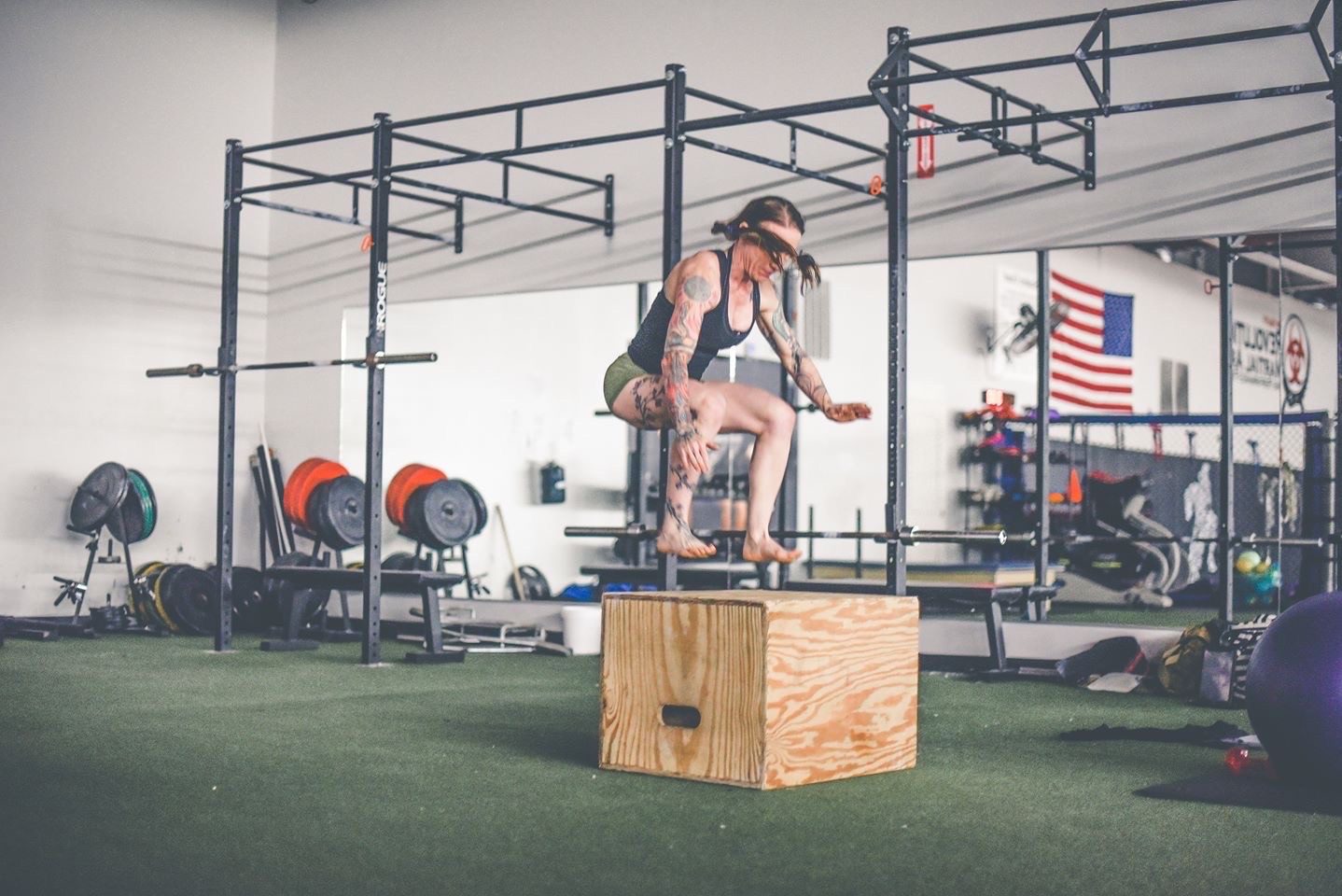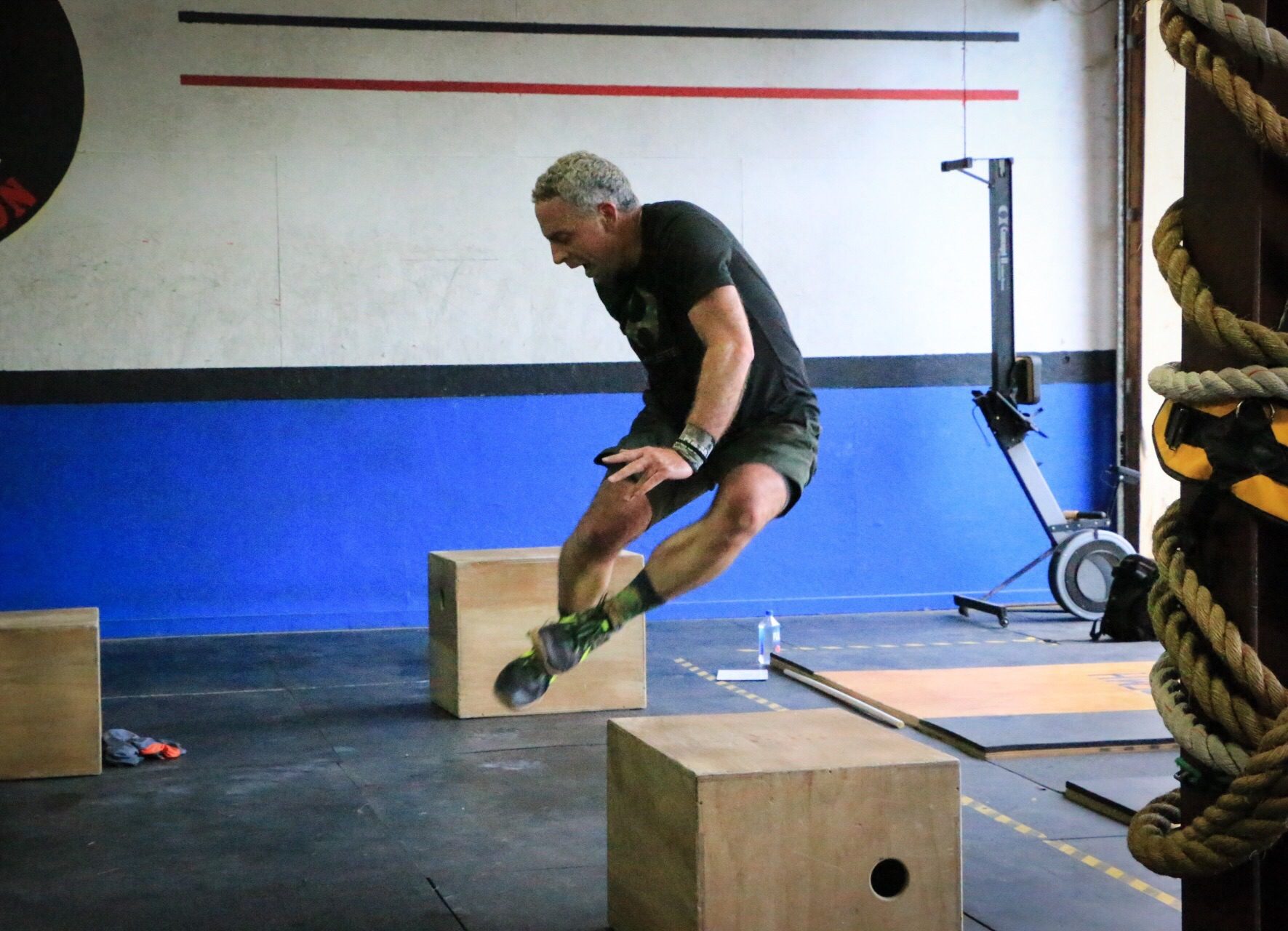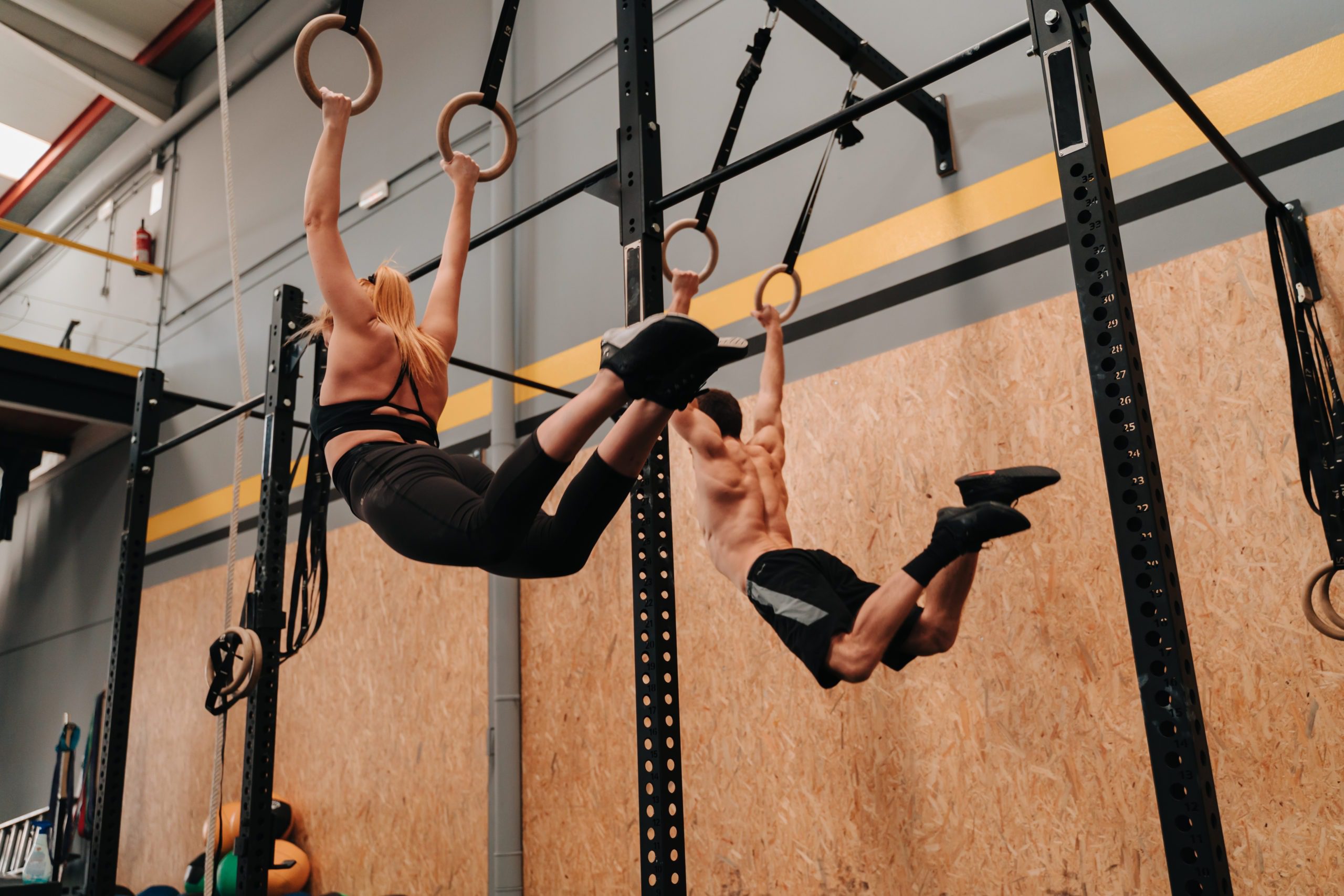Box Jump Progression for Beginners

Box jumps are a hellacious nemesis for so many newer athletes. The fear of failing a jump and breaking your neck is real, but so is the confidence to land a jump. Plyometric movements like box jumps are a cornerstone of athleticism, so if you’re tired of feeling bullied by the box, read on and get to work.

How to do Box Jumps Like a Pro
Box jumps are a hellacious nemesis for so many newer athletes. The fear of failing a jump and breaking your neck is extremely common. This self preservation is why adults often avoid attempting potentially dangerous feats of athleticism: with age comes injury experience that leads to a “risk-averse” attitude. If you never learned how to backflip as a kid, you might shrug it off as an adult with, “eh, I don’t need to try that one. Might break my face.”
But using your body against gravity to jump up onto a higher surface is a key feature of being an athlete with legs. Most professional athletes—NBA, NFL, Olympians—train vertical leap in some way. There’s also major carryover to Olympic weightlifting. Top competitive weightlifters have insane vertical jumping power, which makes sense if your entire sport is centered around launching the heaviest weight possible from the ground to above your head.
Plyometrics are jump training exercises that increase your athletic power by conditioning your muscles to exert maximum force in short intervals of time.
Enter: the plyo box
As a coach, it’s great to watch someone stand nervously in front of a knee-high plyo box, clearly fighting their impulses and psyching themselves out to attempt the jump. They bounce around and pace in front of it, bending their knees and sizing up the leap over and over.
When they finally launch themselves up and stick the landing? It’s incredibly exciting. Cheers and high-fives all around. It’s a huge milestone for someone on their weight loss or fitness journey.
The trick when you’re first starting out is to remember this: you’re never going to be totally sure you can make the jump. Not until you commit to the scary part and actually land it.
Here are some time-tested and proven steps to get you there.

How to build up your box jump
Step 1: Start with step-ups
The best place to start is to build confidence in your coordination and leg strength by stepping up and down one foot at a time onto a stable, elevated surface (like a staircase). Really think about pressing down through the foot on the box to create stability up the entire chain of your body.
But remember: step-ups are a slow movement. They’ll work your strength, but not the explosiveness you need to jump high or the spatial awareness and timing it takes to land a higher box jump. Take it slow, but try not to linger on step-ups forever.
Step 2: Get your technique down
The key points here are the two feet takeoff and two feet landing. With your feet hip-width apart, bend your knees and sit your hips back (like the beginning of a squat). Launch upward using your arms for momentum so you float on top of the box and land softly with your knees bent. Stand up tall once you’re on top.
The position you land in should look just like the position you started in—hips higher than your knees, like the start of a squat. Practice nailing this form with every jump, no matter how small.
Step 3: Graduate to plate jumps
Start with a 15lb rubber plate (solid, one without holes) flat on the ground and jump on top of it daily until it feels easy. Remember to focus on your technique with each jump and land softly. Pretty soon it’ll start to come naturally.
You can also mix in line hops (hopping left-to-right and front-to-back over a line on the floor) or jump-rope sets for extra jumping exposure work.
Step 4: Slowly increase the height
Once that 15lb plate feels easy, stack a 10lb plate on top of it and drill the new height. Keep adding small increments of height until you find a sticking point. Then work that sticking point and move on when it’s less intimidating.
Once you’re up to three or four stacked 45lb plates, or about the height of a 20-inch box, it’s time to…
Step 5: Do it scared!
If you can jump onto a plate stack that’s the same height as a plyo box, you have to go for it. Use the plates to get over your mental blocks, then commit to the box. Your confidence will build with every rep.
You’ll probably never feel totally ready to tackle your first Mt. Everest. That self-preservation fear is going to kick in and you’ll find yourself staring at that grainy wood like it’s a plate of fried scorpions you have to eat to win a bunch of money. Accept the fear, and go for it anyway.
Step 6: Work on rebounding
Up until this point, you should be stepping down one foot at a time to get off the box or plate stack. But there’s a technique called rebounding that’s a challenging way to level up your box jump skills.
To rebound your box jumps means jumping back up onto the box as soon as your feet touch the ground, instead of stepping down. Rebounding can save time by speeding up your reps, but it takes some practice and general self-awareness so you don’t faceplant or tear your Achilles.
Step 7: Try the tall box
When you’re proficient at box jumps and getting some real power underneath you, turn your box on its end and try the 30-inch height. Do a few jumps next to the tall box just to see/feel how explosive you have to be to land on top of it. (Hint: super explosive)
For really high jumps relative to your height, your body will need to fly into full extension then land in almost full flexion. It’s basically like diving into a pool but hitting the water in a cannonball (sort of, you get the idea). Consider yourself a pretty dang skilled athlete if you can jump onto a tall box.
The Marketplace: Shop Expert Programming from Real Coaches
Sometimes all you need to reach your destination on your fitness journey is an expert guide. We’ve got you covered.
The TrainHeroic marketplace is the only place to purchase programming from the World’s best coaches, delivered through the immersive training experience of the TrainHeroic app.
Browse from thousands of programs for any goal and every type of athlete.
Or, join a monthly programming membership to connect with a real coach and community of athletes training just like you. Try any programming subscription free for 7 days.

Prevent box jump injuries
We’re scared of box jumps for a reason—you can hurt yourself. Scraped shins, strained calves, and torn Achilles tendons are all possible, but your chances of injury only increase if you become careless with your reps.
Avoid rounding your back, landing lazily or worse, stomping hard when you land. When you get tired, rest instead of struggling to make another jump and missing it. If they’re available at your gym, use the soft boxes instead of the regular wooden ones. And if all else fails, wear some shin guards.
If you pay attention to your body, avoid injury, and push yourself just the right amount, you can start stacking plates on a tall box and firing up onto them like you’re wearing a jetpack.

Lily frei
Lily is TrainHeroic’s Marketing Content Creator and a CF-L1 with an English background. She was a successful freelance marketer for the functional fitness industry until being scooped up by TrainHeroic. An uncommon combo of bookish, artsy word-nerd and lifelong athlete, Lily is passionately devoted to weightlifting, CrossFit, yoga, dance, and aerial acrobatics. Find her showcasing her artist-athlete hobbies on IG @lilylectric.

Join the community
Sign up for the latest training news and updates from TrainHeroic

About TrainHeroic
Support
Made with love, sweat, protein isolate and hard work in Denver, CO
© 2021 TrainHeroic, Inc. All rights reserved.


